 Perfluoroalkyl substances (PFASs) or perfluorochemicals (PFCs) are the most widespread and persistent manmade chemicals on earth. Common products that contain PFASs are Teflon pans, non-stick cookware, rain/waterproof jackets (like Gore-Tex), fire-fighting foams, food packaging, carpets, and furniture fabrics. PFASs stay in the environment for a long period of time, which means they can accumulate in organisms to levels that cause harmful effects. This 9-page fact sheet discusses the occurrence, use, exposure, and potential harmful effects of PFASs to humans and the environment, and suggests ways to reduce your exposure to PFSAs. Written by Ignacio A. Rodriguez-Jorquera and Gurpal S. Toor, and published by the UF Department of Soil and Water Science, March 2015. (Photos: Thinkstock.com)
Perfluoroalkyl substances (PFASs) or perfluorochemicals (PFCs) are the most widespread and persistent manmade chemicals on earth. Common products that contain PFASs are Teflon pans, non-stick cookware, rain/waterproof jackets (like Gore-Tex), fire-fighting foams, food packaging, carpets, and furniture fabrics. PFASs stay in the environment for a long period of time, which means they can accumulate in organisms to levels that cause harmful effects. This 9-page fact sheet discusses the occurrence, use, exposure, and potential harmful effects of PFASs to humans and the environment, and suggests ways to reduce your exposure to PFSAs. Written by Ignacio A. Rodriguez-Jorquera and Gurpal S. Toor, and published by the UF Department of Soil and Water Science, March 2015. (Photos: Thinkstock.com)
http://edis.ifas.ufl.edu/ss631
Tag: Department of Soil and Water Sciences
Contaminants in the Urban Environment: Pharmaceuticals and Personal Care Products (PPCPs), Parts 1 and 2
 Pharmaceuticals and personal care products contain a variety of chemical substances that enter household wastewater from bath and shower, sinks, and washers and ultimately find their way into the environment. Continuous discharge of wastewater contributes to the accumulation of these substances in the environment — where they can be harmful to organisms. These fact sheets were written by Yun-Ya Yang and Gurpal S. Toor, and published by the UF Department of Soil and Water Science, March 2015. (Photo: iStock/Thinkstock.com)
Pharmaceuticals and personal care products contain a variety of chemical substances that enter household wastewater from bath and shower, sinks, and washers and ultimately find their way into the environment. Continuous discharge of wastewater contributes to the accumulation of these substances in the environment — where they can be harmful to organisms. These fact sheets were written by Yun-Ya Yang and Gurpal S. Toor, and published by the UF Department of Soil and Water Science, March 2015. (Photo: iStock/Thinkstock.com)
Part 1 provides an overview of the use and sale of PPCPs in the United States and the world: http://edis.ifas.ufl.edu/ss632
Part 2 discusses the sources and impacts of PPCPs and offers common-sense ways we can protect our environment from PPCPs.
http://edis.ifas.ufl.edu/ss633
Nutrient Management of Vegetable and Agronomic Row Crops Handbook
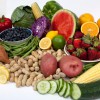 Through the implementation of a series of targeted cultural practices discussed in this production guide, growers should be able to reconcile economic profitability and responsible use of water and fertilizer. Topics include: proper sampling practices and test interpretations; irrigation management methods and automation; use of alternate fertilizer materials to retain nutrients in the soil but allow adequate supply for crop uptake. Use of these BMPs ensures that adequate fertilizer rates may be achieved by combinations of UF/IFAS recommended base rates and supplemental fertilizer applications. This 199-page handbook was edited by Kelly T. Morgan, and published by the UF Department of Soil and Water Science, February 2015.
Through the implementation of a series of targeted cultural practices discussed in this production guide, growers should be able to reconcile economic profitability and responsible use of water and fertilizer. Topics include: proper sampling practices and test interpretations; irrigation management methods and automation; use of alternate fertilizer materials to retain nutrients in the soil but allow adequate supply for crop uptake. Use of these BMPs ensures that adequate fertilizer rates may be achieved by combinations of UF/IFAS recommended base rates and supplemental fertilizer applications. This 199-page handbook was edited by Kelly T. Morgan, and published by the UF Department of Soil and Water Science, February 2015.
http://edis.ifas.ufl.edu/ss639
Contribucion de las practicas de produccion de cultivos y las condiciones climaticas a la seguridad microbiologica de los tomates y pimientos
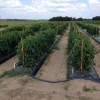 Durante la última década, las frutas, verduras y frutos secos se encuentran entre los alimentos relacionados con brotes de gastroenteritis causadas por cepas enterovirulentas de E. coli y Salmonella no tifoidea que resultan en miles de hospitalizaciones y pérdidas de varios millones de dólares en la industria de alimentos (Mandrell 2009; Batz, Hoffman, y Morris 2011). Desde 2006, dieciséis brotes de salmonelosis se han relacionado con el consumo de frutas y verduras, incluyendo tomates, melones, coles, pepinos, mangos, piñones, pistachos, mantequilla de maní, papayas, pimientos y además alimentos congelados y procesados que contienen productos vegetales. Esta hoja informativa fue producida para proveer información actualizada sobre las prácticas de producción de tomate y sus asociaciones con Salmonella. Esta información es útil para Agentes de Extensión Agraria en sus programas de educación sobre cultivos hortícolas. This 4-page fact sheet is the Spanish language version of The Role of Crop Production Practices and Weather Conditions in Microbiological Safety of Tomatoes and Peppers (SS628). It was written by Massimiliano Marvasi, Max Teplitski, and George Hochmuth, and published by the UF Department of Soil and Water Science, February 2015.
Durante la última década, las frutas, verduras y frutos secos se encuentran entre los alimentos relacionados con brotes de gastroenteritis causadas por cepas enterovirulentas de E. coli y Salmonella no tifoidea que resultan en miles de hospitalizaciones y pérdidas de varios millones de dólares en la industria de alimentos (Mandrell 2009; Batz, Hoffman, y Morris 2011). Desde 2006, dieciséis brotes de salmonelosis se han relacionado con el consumo de frutas y verduras, incluyendo tomates, melones, coles, pepinos, mangos, piñones, pistachos, mantequilla de maní, papayas, pimientos y además alimentos congelados y procesados que contienen productos vegetales. Esta hoja informativa fue producida para proveer información actualizada sobre las prácticas de producción de tomate y sus asociaciones con Salmonella. Esta información es útil para Agentes de Extensión Agraria en sus programas de educación sobre cultivos hortícolas. This 4-page fact sheet is the Spanish language version of The Role of Crop Production Practices and Weather Conditions in Microbiological Safety of Tomatoes and Peppers (SS628). It was written by Massimiliano Marvasi, Max Teplitski, and George Hochmuth, and published by the UF Department of Soil and Water Science, February 2015.
http://edis.ifas.ufl.edu/ss630
Impacto de las variedades de tomate y su estado de madurez en la susceptibilidad a Salmonella
 De 1998 a 2007 la fruta fresca, verdura, especias y nueces fueron comúnmente asociados con brotes de gastroenteritis (Batz, Hoffman, y Morris 2011). Salmonella se ha convertido en uno de los patógenos humanos más problemáticos asociado a productos frescos, nueces y a los alimentos que contienen esos ingredientes (Batz, Hoffman, y Morris 2011; deWaal, Tian, y Plunkett 2009). Esta hoja informativa fue producida para proveer información actualizada sobre las prácticas de producción de tomate y sus asociaciones con Salmonella. Esta información es útil para los Agentes de Extensión Agraria en sus programas de educación sobre cultivos hortícolas. This 3-page fact sheet is the Spanish language version of Impact of Tomato Varieties and Maturity State on Susceptibility of Tomatoes to Salmonella (SS627). It was written by Massimiliano Marvasi, Max Teplitski, and George Hochmuth, and published by the UF Department of Soil and Water Science, February 2015. (Photo: Max Teplitski)
De 1998 a 2007 la fruta fresca, verdura, especias y nueces fueron comúnmente asociados con brotes de gastroenteritis (Batz, Hoffman, y Morris 2011). Salmonella se ha convertido en uno de los patógenos humanos más problemáticos asociado a productos frescos, nueces y a los alimentos que contienen esos ingredientes (Batz, Hoffman, y Morris 2011; deWaal, Tian, y Plunkett 2009). Esta hoja informativa fue producida para proveer información actualizada sobre las prácticas de producción de tomate y sus asociaciones con Salmonella. Esta información es útil para los Agentes de Extensión Agraria en sus programas de educación sobre cultivos hortícolas. This 3-page fact sheet is the Spanish language version of Impact of Tomato Varieties and Maturity State on Susceptibility of Tomatoes to Salmonella (SS627). It was written by Massimiliano Marvasi, Max Teplitski, and George Hochmuth, and published by the UF Department of Soil and Water Science, February 2015. (Photo: Max Teplitski)
http://edis.ifas.ufl.edu/ss629
The role of crop production practices and weather conditions in microbiological safety of tomatoes and peppers
 Salmonella and other human pathogens can contaminate produce at any stage from “farm to fork.” If we can better understand how production practices may make crops more or less susceptible to human pathogens we may be able to significantly reduce the number and severity of the produce-associated outbreaks. This 3-page fact sheet provides up-to-date information about tomato production practices and their relationships with Salmonella. Written by Massimiliano Marvasi, George Hochmuth, and Max Teplitski, and published by the UF Department of Soil and Water Science, December 2014. (Photo: Max Teplitski, UF/IFAS)
Salmonella and other human pathogens can contaminate produce at any stage from “farm to fork.” If we can better understand how production practices may make crops more or less susceptible to human pathogens we may be able to significantly reduce the number and severity of the produce-associated outbreaks. This 3-page fact sheet provides up-to-date information about tomato production practices and their relationships with Salmonella. Written by Massimiliano Marvasi, George Hochmuth, and Max Teplitski, and published by the UF Department of Soil and Water Science, December 2014. (Photo: Max Teplitski, UF/IFAS)
http://edis.ifas.ufl.edu/ss628
Impact of Tomato Varieties and Maturity State on Susceptibility of Tomatoes to Salmonella
 Non-typhoidal Salmonella has emerged as one of the problematic human pathogens associated with fresh produce, nuts, and complex foods containing them. Recent research shows that some varieties of plants are more “resistant” to colonization by the pathogens than others. This raises the intriguing possibility that cultivar selection could be used to identify crop varieties that may be less conducive to proliferation of human pathogens. This 3-page fact sheet provides up-to-date information about tomato production practices and their relationships with Salmonella. Written by Massimiliano Marvasi, George Hochmuth, and Max Teplitski, and published by the UF Department of Soil and Water Science, December 2014. (Photo: Max Teplitski, UF/IFAS)
Non-typhoidal Salmonella has emerged as one of the problematic human pathogens associated with fresh produce, nuts, and complex foods containing them. Recent research shows that some varieties of plants are more “resistant” to colonization by the pathogens than others. This raises the intriguing possibility that cultivar selection could be used to identify crop varieties that may be less conducive to proliferation of human pathogens. This 3-page fact sheet provides up-to-date information about tomato production practices and their relationships with Salmonella. Written by Massimiliano Marvasi, George Hochmuth, and Max Teplitski, and published by the UF Department of Soil and Water Science, December 2014. (Photo: Max Teplitski, UF/IFAS)
http://edis.ifas.ufl.edu/ss627
Producing biochar using a custom designed Top-lit Updraft (TLUD) gasifier
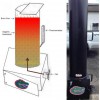 Biochar can be produced in a wide variety of ways; some are complex, while others are relatively simple. Researchers at the University of Florida Everglades Research and Education Center in Belle Glade, FL, designed and built a top-lit updraft (TLUD) gasifier that can generate biochar from locally acquired feedstock. This 4-page fact sheet describes its design and evaluates the biochar recovery of four locally available feedstocks. Written by Jehangir H. Bhadha, Stephen Jennewein, Julio Sanchez, and Timothy A. Lang, and published by the UF Department of Soil and Water Science, September 2014.
Biochar can be produced in a wide variety of ways; some are complex, while others are relatively simple. Researchers at the University of Florida Everglades Research and Education Center in Belle Glade, FL, designed and built a top-lit updraft (TLUD) gasifier that can generate biochar from locally acquired feedstock. This 4-page fact sheet describes its design and evaluates the biochar recovery of four locally available feedstocks. Written by Jehangir H. Bhadha, Stephen Jennewein, Julio Sanchez, and Timothy A. Lang, and published by the UF Department of Soil and Water Science, September 2014.
http://edis.ifas.ufl.edu/ss626
The Four Rs of Fertilizer Management
 Supplying needed nutrients for crop production involves attention to four major fertilization factors (the 4Rs): right rate, right source, right placement, and right timing. Attention to these factors will provide adequate nutrition for crop production while minimizing the risk of loss of nutrients to the environment. In this publication each factor is described, as well as how the information can be provided from a soil test report. While not a formal part of the 4Rs, the importance of irrigation to overall nutrient management is stressed in this 4-page fact sheet written by George Hochmuth, Rao Mylavarapu, and Ed Hanlon, and published by the UF Department of Soil and Water Science, October 2014.
Supplying needed nutrients for crop production involves attention to four major fertilization factors (the 4Rs): right rate, right source, right placement, and right timing. Attention to these factors will provide adequate nutrition for crop production while minimizing the risk of loss of nutrients to the environment. In this publication each factor is described, as well as how the information can be provided from a soil test report. While not a formal part of the 4Rs, the importance of irrigation to overall nutrient management is stressed in this 4-page fact sheet written by George Hochmuth, Rao Mylavarapu, and Ed Hanlon, and published by the UF Department of Soil and Water Science, October 2014.
http://edis.ifas.ufl.edu/ss624
Fertilizer Recommendation Philosophies
 Farmers receive varying fertilizer recommendations depending on which lab they consult because labs employ different chemical methods and procedures to analyze the samples and subscribe to different fertilizer recommendation philosophies. This 4-page fact sheet explains the main soil-test philosophies, their basis, and their applications, and explains why the Sufficiency Level of Available Nutrient philosophy (SLAN), also called the Crop Nutrient Requirement (CNR), is most likely to be the best to govern fertilizer recommendations in Florida today. Written by George Hochmuth, Rao Mylavarapu, and Ed Hanlon, and published by the UF Department of Soil and Water Science, October 2014. (Photo by George Hochmuth, UF/IFAS)
Farmers receive varying fertilizer recommendations depending on which lab they consult because labs employ different chemical methods and procedures to analyze the samples and subscribe to different fertilizer recommendation philosophies. This 4-page fact sheet explains the main soil-test philosophies, their basis, and their applications, and explains why the Sufficiency Level of Available Nutrient philosophy (SLAN), also called the Crop Nutrient Requirement (CNR), is most likely to be the best to govern fertilizer recommendations in Florida today. Written by George Hochmuth, Rao Mylavarapu, and Ed Hanlon, and published by the UF Department of Soil and Water Science, October 2014. (Photo by George Hochmuth, UF/IFAS)
http://edis.ifas.ufl.edu/ss623
Soil Testing for Plant-Available Nutrients: What Is It and Why Do We Use It?
 Farmers need soil-testing procedures to assess soils for potential plant-available nutrients. Soil testing is the foremost best management practice (BMP). It helps farmers achieve profitable crops while protecting the environment from excessive fertilization and nutrient losses. This 5-page fact sheet describes the important steps required to test soil for potential plant-available nutrients. Written by George Hochmuth, Rao Mylavarapu, and Ed Hanlon, and published by the UF Department of Soil and Water Science, October 2014.
Farmers need soil-testing procedures to assess soils for potential plant-available nutrients. Soil testing is the foremost best management practice (BMP). It helps farmers achieve profitable crops while protecting the environment from excessive fertilization and nutrient losses. This 5-page fact sheet describes the important steps required to test soil for potential plant-available nutrients. Written by George Hochmuth, Rao Mylavarapu, and Ed Hanlon, and published by the UF Department of Soil and Water Science, October 2014.
http://edis.ifas.ufl.edu/ss621
Developing a Soil Test Extractant: The Correlation and Calibration Processes
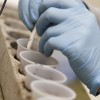 An understanding of soil testing is an important part of preventing excess fertilizer applications that can potentially impact the environment and ensuring commercially viable yields and aesthetic, healthy landscapes. This 4-page fact sheet describes the process UF/IFAS soil scientists used to develop a predictive and/or diagnostic soil test that can be depended on by commercial agricultural and horticultural producers as well as homeowners and can provide accurate nutrient recommendations or diagnose nutrient imbalances for crops or plants. Written by George Hochmuth, Rao Mylavarapu, and Ed Hanlon, and published by the UF Department of Soil and Water Science, October 2014.
An understanding of soil testing is an important part of preventing excess fertilizer applications that can potentially impact the environment and ensuring commercially viable yields and aesthetic, healthy landscapes. This 4-page fact sheet describes the process UF/IFAS soil scientists used to develop a predictive and/or diagnostic soil test that can be depended on by commercial agricultural and horticultural producers as well as homeowners and can provide accurate nutrient recommendations or diagnose nutrient imbalances for crops or plants. Written by George Hochmuth, Rao Mylavarapu, and Ed Hanlon, and published by the UF Department of Soil and Water Science, October 2014.
http://edis.ifas.ufl.edu/ss622
Soil and Plant Tissue Testing
 Soil testing is the best tool for monitoring soil fertility levels and providing baseline information for cost-effective fertilization programs. But a major limitation is that it typically accounts for the plant-available nutrient pool present in the surface soil layer. Because of the extensive root system in some plants, plant analysis is a complement to the soil test to better assess the overall nutrient status of a perennial forage system, while revealing imbalances among nutrients that may affect crop production. This 4-page fact sheet was written by Maria L. Silveira, and published by the UF Department of Soil and Water Science, June 2014.
Soil testing is the best tool for monitoring soil fertility levels and providing baseline information for cost-effective fertilization programs. But a major limitation is that it typically accounts for the plant-available nutrient pool present in the surface soil layer. Because of the extensive root system in some plants, plant analysis is a complement to the soil test to better assess the overall nutrient status of a perennial forage system, while revealing imbalances among nutrients that may affect crop production. This 4-page fact sheet was written by Maria L. Silveira, and published by the UF Department of Soil and Water Science, June 2014.
http://edis.ifas.ufl.edu/ss625
Extraction of Soil Nutrients Using Mehlich-3 Reagent for Acid-Mineral Soils of Florida
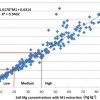 Soil testing is a multistep process starting with the collection of a sample that adequately represents the area or field to be tested. Due to wide-ranging soil conditions across Florida and the United States, multiple soil test methods exist. During the 1970s, Florida along with several other southeastern US states adopted Mehlich-1 (M1) as the official extractant for acidic soils. The UF/IFAS Plant Nutrient Oversight Committee approved the change from M1 to M3 in 2010. Based on observations of the interpretations, the technical committee revised the M3 interpretation in March 2014. The new interpretations have been correlated with the M1 interpretations, as closely and realistically as possible, so the actual nutrient recommendations are not changed. This 7-page fact sheet was written by Rao Mylavarapu, Tom Obreza, Kelly Morgan, George Hochmuth, Vimala Nair, and Alan Wright, and published by the UF Department of Soil and Water Science, May 2014.
Soil testing is a multistep process starting with the collection of a sample that adequately represents the area or field to be tested. Due to wide-ranging soil conditions across Florida and the United States, multiple soil test methods exist. During the 1970s, Florida along with several other southeastern US states adopted Mehlich-1 (M1) as the official extractant for acidic soils. The UF/IFAS Plant Nutrient Oversight Committee approved the change from M1 to M3 in 2010. Based on observations of the interpretations, the technical committee revised the M3 interpretation in March 2014. The new interpretations have been correlated with the M1 interpretations, as closely and realistically as possible, so the actual nutrient recommendations are not changed. This 7-page fact sheet was written by Rao Mylavarapu, Tom Obreza, Kelly Morgan, George Hochmuth, Vimala Nair, and Alan Wright, and published by the UF Department of Soil and Water Science, May 2014.
http://edis.ifas.ufl.edu/ss620
Comparison of Soil Test Extractants for Available Soil Phosphorus in High pH Sandy Soils of South Florida
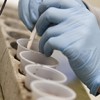 This document addresses the selection of soil nutrient extractants in high pH soils and discusses their relationship to both nutrition and fertilizer management. This document’s objective is to describe the impact of selected soil extractants on nutrient management and their ability to determine soil phosphorus availability. The target audience for this series dealing with citrus nutrition includes Certified Crop Advisers; citrus, vegetable, and sugarcane producers; fertilizer dealers; and other parties interested in crop fertilization practices. This 4-page fact sheet was written by Kelly T. Morgan and Kamal Mahmoud, and published by the UF Department of Soil and Water Science, December 2014.
This document addresses the selection of soil nutrient extractants in high pH soils and discusses their relationship to both nutrition and fertilizer management. This document’s objective is to describe the impact of selected soil extractants on nutrient management and their ability to determine soil phosphorus availability. The target audience for this series dealing with citrus nutrition includes Certified Crop Advisers; citrus, vegetable, and sugarcane producers; fertilizer dealers; and other parties interested in crop fertilization practices. This 4-page fact sheet was written by Kelly T. Morgan and Kamal Mahmoud, and published by the UF Department of Soil and Water Science, December 2014.
http://edis.ifas.ufl.edu/ss613
Boron (B) and Chlorine (Cl) for Citrus Trees
 Since mineral nutrition is a major factor in maximizing yield of high-quality fruit, understanding the functions of mineral elements, diagnosing nutrient deficiencies, and providing needed fertilizers are essential. This 4-page fact sheet describes and discusses boron (B) and chlorine (Cl) deficiencies, functions, and recommended practices to alleviate nutritional problems. Written by Mongi Zekri and Tom Obreza , and published by the UF Department of Soil and Water Science, March 2014.
Since mineral nutrition is a major factor in maximizing yield of high-quality fruit, understanding the functions of mineral elements, diagnosing nutrient deficiencies, and providing needed fertilizers are essential. This 4-page fact sheet describes and discusses boron (B) and chlorine (Cl) deficiencies, functions, and recommended practices to alleviate nutritional problems. Written by Mongi Zekri and Tom Obreza , and published by the UF Department of Soil and Water Science, March 2014.
http://edis.ifas.ufl.edu/ss619
Anaerobic Digesters for Manure Management for Livestock Operations
 Livestock wastes can be important sources of nutrients for crops, but manure must be managed properly to prevent loss of nutrients to the environment in air or ground and/or surface water. Stabilization of manure is important prior to successfully recycling the organic material back to arable lands. Methods for stabilizing livestock wastes include composting, aerobic digestion, anaerobic digestion, lime stabilization, and heat drying. The stabilization process reduces the organic matter and water contents, unpleasant odors, concentrations of pathogenic microorganisms, and weed seeds. Anaerobic digestion (AD), which is the topic of this fact sheet, also results in the production of renewable energy in the form of methane-rich biogas. This 10-page fact sheet informs farmers and Extension agents about types of anaerobic digester systems used in the United States with various manure-handling systems. It points out digester systems currently being used in Florida and the benefits of managing livestock manure with a digester system. Written by Rishi Prasad, George Hochmuth, and Ann C. Wilkie, and published by the UF Department of Soil and Water Science, March 2014.
Livestock wastes can be important sources of nutrients for crops, but manure must be managed properly to prevent loss of nutrients to the environment in air or ground and/or surface water. Stabilization of manure is important prior to successfully recycling the organic material back to arable lands. Methods for stabilizing livestock wastes include composting, aerobic digestion, anaerobic digestion, lime stabilization, and heat drying. The stabilization process reduces the organic matter and water contents, unpleasant odors, concentrations of pathogenic microorganisms, and weed seeds. Anaerobic digestion (AD), which is the topic of this fact sheet, also results in the production of renewable energy in the form of methane-rich biogas. This 10-page fact sheet informs farmers and Extension agents about types of anaerobic digester systems used in the United States with various manure-handling systems. It points out digester systems currently being used in Florida and the benefits of managing livestock manure with a digester system. Written by Rishi Prasad, George Hochmuth, and Ann C. Wilkie, and published by the UF Department of Soil and Water Science, March 2014.
http://edis.ifas.ufl.edu/ss615
Molybdenum (Mo) and Nickel (Ni) for Citrus Trees
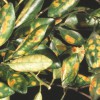 Since mineral nutrition is a major factor in maximizing yield of high quality fruit, understanding the functions of mineral elements, diagnosing nutrient deficiencies, and providing needed fertilizers are essential. This publication describes and discusses molybdenum (Mo) and nickel (Ni) deficiencies, functions, and recommended practices to alleviate nutritional problems.This 3-page fact sheet was written by Mongi Zekri and Tom Obreza , and published by the UF Department of Soil and Water Science, March 2014.
Since mineral nutrition is a major factor in maximizing yield of high quality fruit, understanding the functions of mineral elements, diagnosing nutrient deficiencies, and providing needed fertilizers are essential. This publication describes and discusses molybdenum (Mo) and nickel (Ni) deficiencies, functions, and recommended practices to alleviate nutritional problems.This 3-page fact sheet was written by Mongi Zekri and Tom Obreza , and published by the UF Department of Soil and Water Science, March 2014.
http://edis.ifas.ufl.edu/ss618
Iron (Fe) and Copper (Cu) for Citrus Trees
 Since mineral nutrition is a major factor in maximizing yield of high-quality fruit, understanding the functions of mineral elements, diagnosing nutrient deficiencies, and providing needed fertilizers are essential. This publication describes and discusses iron (Fe) and copper (Cu) deficiencies, functions, and recommended practices to alleviate nutritional problems. This 7-page fact sheet was written by Mongi Zekri and Tom Obreza, and published by the UF Department of Soil and Water Science, March 2014.
Since mineral nutrition is a major factor in maximizing yield of high-quality fruit, understanding the functions of mineral elements, diagnosing nutrient deficiencies, and providing needed fertilizers are essential. This publication describes and discusses iron (Fe) and copper (Cu) deficiencies, functions, and recommended practices to alleviate nutritional problems. This 7-page fact sheet was written by Mongi Zekri and Tom Obreza, and published by the UF Department of Soil and Water Science, March 2014.
http://edis.ifas.ufl.edu/ss617
Manganese (Mn) and Zinc (Zn) for Citrus Trees
 Since mineral nutrition is a major factor in maximizing yield of high-quality fruit, understanding the functions of mineral elements, diagnosing nutrient deficiencies, and providing needed fertilizers are essential. This publication describes and discusses manganese (Mn) and zinc (Zn) deficiencies, functions, and recommended practices to alleviate nutritional problems. This 5-page fact sheet was written by Mongi Zekri and Tom Obreza , and published by the UF Department of Soil and Water Science, March 2014.
Since mineral nutrition is a major factor in maximizing yield of high-quality fruit, understanding the functions of mineral elements, diagnosing nutrient deficiencies, and providing needed fertilizers are essential. This publication describes and discusses manganese (Mn) and zinc (Zn) deficiencies, functions, and recommended practices to alleviate nutritional problems. This 5-page fact sheet was written by Mongi Zekri and Tom Obreza , and published by the UF Department of Soil and Water Science, March 2014.
http://edis.ifas.ufl.edu/ss616